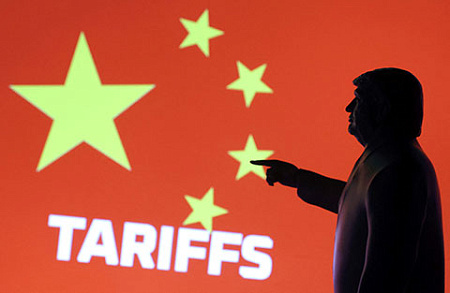
A new, potentially disruptive chapter in the ongoing economic rivalry between the United States and China has unfolded, transforming the world’s oceans into a fresh battleground. As of this week, both global economic titans have implemented additional port fees targeting commercial shipping vessels, ranging from container ships carrying children’s toys to tankers transporting essential oil supplies. This escalation marks a significant deepening of the trade war, yet amidst the rising tensions, former U.S. President Donald Trump, a central figure in this dynamic, continues to suggest that a comprehensive agreement between the two powers remains within reach.
Beijing swiftly responded to Washington’s moves by instituting its own retaliatory measures. According to reports from Reuters and details broadcast by Chinese state television (CCTV), China is now levying supplementary charges at its ports on vessels either built in the U.S., sailing under the American flag, or primarily utilized by U.S. entities. Notably, ships of Chinese construction or those flagged under China are exempted from these new tariffs. Furthermore, CCTV clarified that empty vessels calling at Chinese shipyards for repairs are also spared the additional financial burden.
This latest maritime skirmish, however, was initiated by the United States. Earlier this year, the Trump administration announced plans to implement similar port fees on vessels with ties to China entering U.S. waters. The stated objectives behind Washington’s strategy were dual-pronged: to diminish China’s growing dominance in the global maritime shipping sector and to bolster the struggling shipbuilding industry within the United States. These actions, it has been revealed, are not entirely novel; they are rooted in the findings of an investigation conducted by the preceding Biden administration. That inquiry concluded that China has engaged in unfair competitive practices to secure a commanding position in the international shipping market.
The financial impact of these escalating fees is projected to be substantial, particularly for major players in the shipping industry. Chinese container giant COSCO is anticipated to bear the brunt of the U.S. tariffs, facing an estimated $1.6 billion in additional charges in U.S. ports in 2026, representing nearly half of the total expected levies. Analysts underscore the broader risks. Omar Nekta of Jefferies cautions that approximately 13% of global tankers and 11% of container ships will be affected. Additionally, Athens-based ship brokerage Xclusiv warns that this ‘eye for an eye’ approach will inevitably lead to a spiraling cycle of mutual taxation, posing significant risks to the fluidity and efficiency of global maritime trade flows.
Adding a layer of unpredictability to the situation is former President Trump’s often-oscillating rhetoric. While hinting at a possible de-escalation of trade and tariff tensions, as reported by Yahoo Finance, Trump simultaneously delivered thinly veiled threats against Chinese President Xi Jinping. In a post on his social media platform, Truth Social, he stated, ‘Don’t worry about China. All will be great. Just a bad moment for President Xi, who is a highly respected man. He doesn’t want his country to go into a Depression. I don’t want that either. The U.S. wants to help China, not hurt it!!!’ Such pronouncements directly influence financial markets. A previous threat by Trump to impose an additional 100% tariff on Chinese goods by November 1, citing China’s ‘highly aggressive stance on trade’ and export restrictions on rare earth metals, triggered a sharp decline on Wall Street. Conversely, a softening of his remarks often leads to a rebound in U.S. stocks, illustrating the profound impact of his statements.
Experts weigh in on the implications of this maritime tariff battle. Vasily Kashin, a senior research fellow at the Higher School of Economics, noted that while the escalation originated with the U.S., the situation is particularly challenging for China, especially concerning its shipbuilding industry. China is a global leader in commercial shipbuilding, competing fiercely with Japan and South Korea. Discriminatory measures against Chinese-built vessels, Kashin explains, directly undermine the competitive standing of Chinese shipbuilders in the global market—a critical export-oriented sector for the country. Despite the current ‘hard bargaining,’ Kashin anticipates that both sides ultimately seek resolution. ‘I think some kind of agreement will be reached,’ he concluded, suggesting a potential pathway out of the current impasse.
As the world watches the two largest economies navigate this deepening trade conflict, the implications for global supply chains, international commerce, and geopolitical stability remain significant. The stakes are high, and while the prospect of an eventual agreement offers a glimmer of hope, the immediate future points to continued volatility and challenges for businesses and consumers worldwide.
